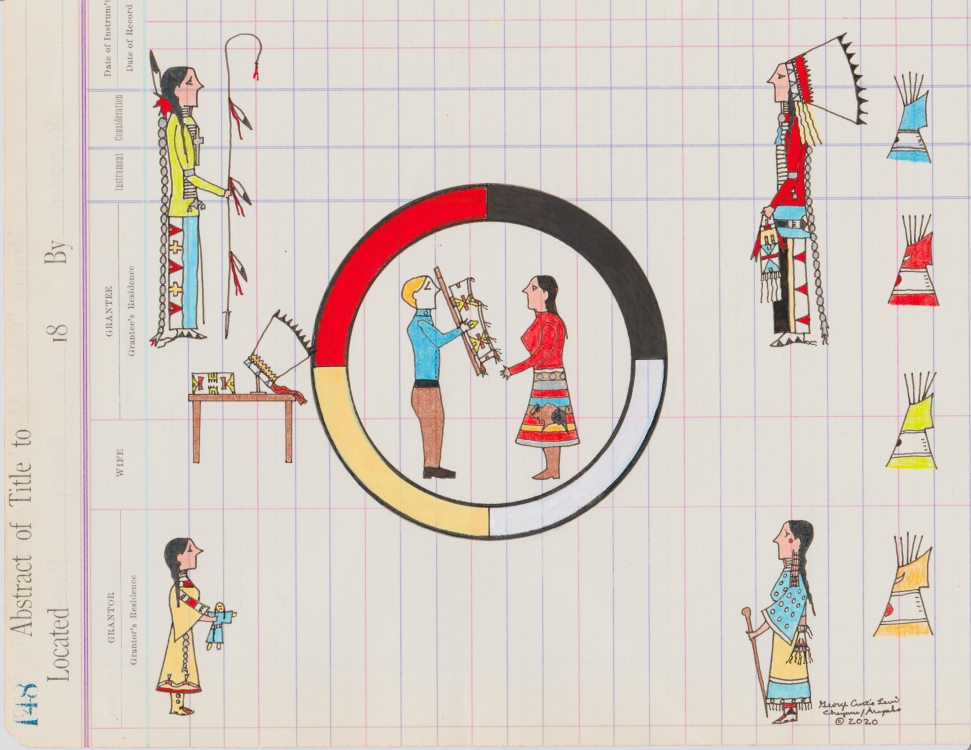
- Details
- By Shannon O’Loughlin
There are 122,000 known Ancestors waiting in boxes in American museums, universities and government agencies. Imagine 122,000 people – that’s the entire population of Berkeley, California, or Hartford, Connecticut. That is today’s total number of all the Apache and all Tohono O’odham peoples combined.
The Native American Graves Protection and Repatriation Act was created as human rights legislation to repatriate our Ancestors’ remains, their burial belongings, sacred objects and cultural patrimony, and to protect our burial sites. This year marks the 30th anniversary of NAGPRA. But after 30 years, only 20% of museums have returned all reported Ancestors in their collections.
October 26-28The 6th Annual Repatriation Conference: Building Community and Moving Forward after 30 Years of NAGPRA An all-virtual conference hosted by the Association on American Indian Affairs and the University of Denver Museum of Anthropology All are welcome. More info at indian-affairs.org. |
We know that the growth of the United States has been built upon the destruction of our sacred places and grave sites, and laws were passed that made our religions, languages and ceremonies illegal in order to assimilate us out of existence. Wave after wave of federal law codified Tribal dispossession and cleared a literal path for settlement and ownership by others.
NAGPRA was meant to repair some of this destruction. It has allowed us to rebury our relatives and return our sacred items so that we may heal from this trauma.
There have been many institutions that have followed NAGPRA’s process to repatriate. Through consultation with Tribal Nations, those institutions have discovered that Tribes are the experts of their own cultures; and often, the information that had been collected by archaeologists and anthropologists was lacking important facts – or was just plain wrong. These relationships between Tribal Nations and museums have often created opportunities to better educate the public about Tribal Nations and their histories in an appropriate and truthful way.
But there have been other institutions and federal agencies that refuse or delay Tribal Nations’ efforts to consult and repatriate Ancestors and sensitive cultural items. The National NAGPRA Program in the U.S. Department of Interior reports that there are 13 institutions that hold 56% of the total number of reported Ancestors. These are the institutions that have been slow and difficult to work with. They have also declared that the majority of Ancestors in their collections are not affiliated with any Tribe – even though those collections have geographical or other information that would connect the Ancestors to present day Tribal Nations.
Federal agencies are worse. Many museums and Tribes report that academic institutions hold collections from government agencies that refuse to consult with Tribes and inventory their collections. Can you imagine any other federal law being neglected at that level for this long?
As the United States grapples with its legacy of racial oppression and human rights abuses, the Association on American Indian Affairs is partnering with the University of Denver Museum of Anthropology for the 6th Annual Repatriation Conference to take a critical look at the implementation of NAGPRA after 30 years, and to build better relationships to carry out this necessary human rights work. Some of the leading repatriation practitioners from Indian Country and institutions will gather virtually October 26-28 to develop strategies and build alliances to enact an ever-more robust approach to this important human rights work. All are welcome to attend and the sessions will be recorded to access after the Conference.
The Association on American Indian Affairs has made repatriation one of its cornerstone issues, so that we may heal from these historic wrongs that continue to affect us today. Repatriation is a human rights endeavor for all involved in the process. And, it’s one significant way to honor and recognize the First Peoples whose losses instigated the growth of wealth for our American society. Please consider joining our efforts to repatriate our human rights! More info at indian-affairs.org.
Help us defend tribal sovereignty.
At Native News Online, our mission is rooted in telling the stories that strengthen sovereignty and uplift Indigenous voices — not just at year’s end, but every single day.
Because of your generosity last year, we were able to keep our reporters on the ground in tribal communities, at national gatherings and in the halls of Congress — covering the issues that matter most to Indian Country: sovereignty, culture, education, health and economic opportunity.
That support sustained us through a tough year in 2025. Now, as we look to the year ahead, we need your help right now to ensure warrior journalism remains strong — reporting that defends tribal sovereignty, amplifies Native truth, and holds power accountable.
 The stakes couldn't be higher. Your support keeps Native voices heard, Native stories told and Native sovereignty defended.
The stakes couldn't be higher. Your support keeps Native voices heard, Native stories told and Native sovereignty defended.
Stand with Warrior Journalism today.
Levi Rickert (Potawatomi), Editor & Publisher
